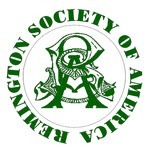A Brief History of Gun Barrel Steel
Author Dr. Drew Hause
In the 1700s, smoothbore musket tubes were primarily wrought iron. To form a barrel (or a pipe), prior to the availability of precision barrel boring, a sheet was folded over a mandrel and the long edge hammer welded. “Cast steel” tubes from Huntsman’s hot-rolled crucible steel process of 1742 were an improvement, but were still of low strength requiring thick (and heavy) barrels.
By 1800, Pattern Welded (Twist, Crolle Damascus and Laminated Steel) barrels began to appear on sporting smoothbore muzzleloaders. English ‘Best Guns’ had Stub Twist in the 1820s-40s, then both Stub Twist and an early Laminated Steel into the 1860s. Crolle Damascus was available in the 1820s, but “English Two Stripe” was not in general use until the mid-1800s, and with Three Iron “Oxford” and a later Laminated Steel, was used c. 1850-1890s. Lower quality English and Belgian guns, many imported into the U.S., used Plain Twist/Skelp into the early 1900s.
No U.S. maker offered a greater variety of Pattern Welded barrels, some aesthetically spectacular, than did Remington. A salesman’s sample rod with 12 different patterns lies in a case in Ilion, New York at the Remington Arms Company Museum, and is illustrated on p. 275 of Charles Semmer’s Remington Double Shotguns.
The 1898 Remington catalog listed the following patterns for the Hammerless Model of 1894
- A Grade: “Two stripe Damascus” (Boston and Oxford 2 S.J.)
- B Grade: “Fine Three stripe Damascus” (Oxford 4 S.J. and Chain J.)
- C Grade: “Finer Damascus” (Etoile and Washington)
- D Grade: “Very fine Damascus” (Chine P. and Legia P.)
- E Grade: “Finest Damascus” (Peiper P. and Ohonon 6 S.J.)
Hammerless Model of 1894 EE
“Ohonon 6 S.T.”
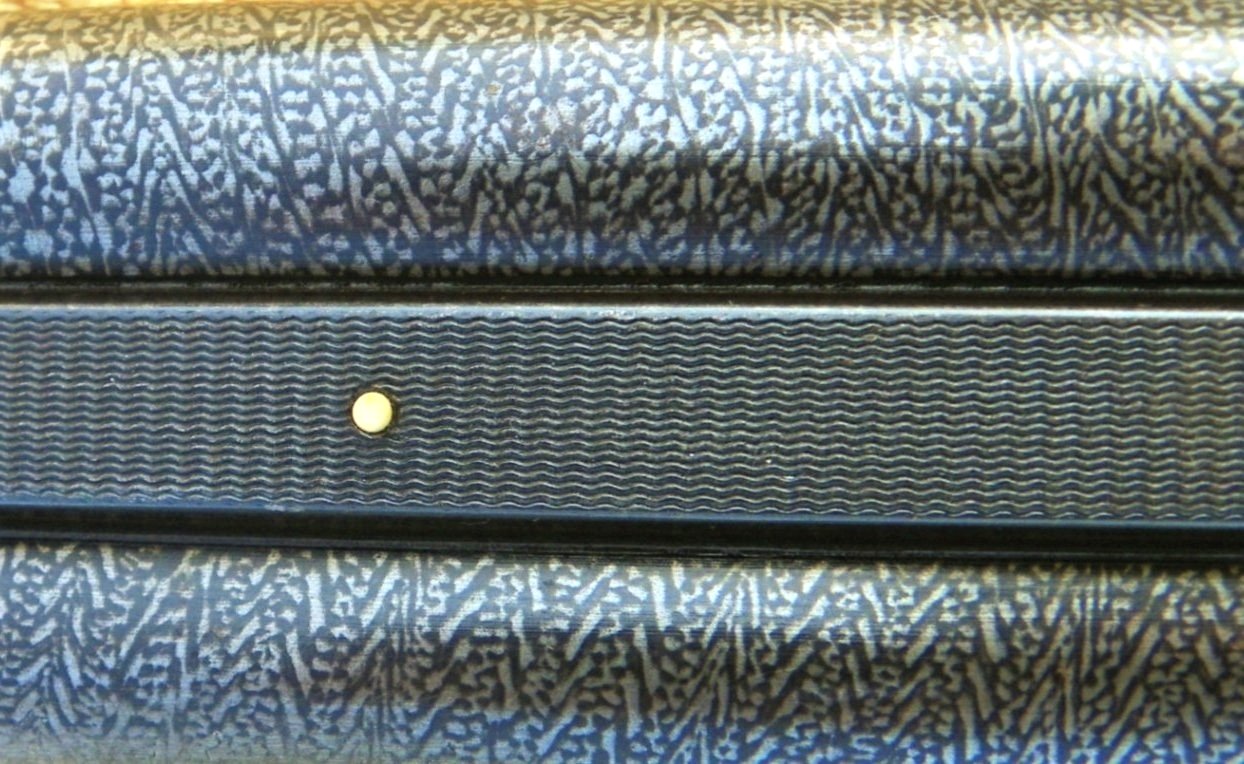
Damascus barrel patterns, strength, and use thereof is not the topic of this article however.
William Kelly is credited with developing what is now known as the Bessemer process in 1846 at his Eddyville Iron Works in Kentucky. Air was blown through molten pig iron to oxidize and remove impurities and carbon.
Remington was one of the first in the U.S. to manufacture Bessemer process barrels, according to “Fire-Arms Manufacture”, U.S. Dept. of Interior, Census Office, 1880:
“The earliest use of decarbonized steel for gun-barrels is generally credited to the Remingtons, [E. Remington & Sons] who made steel barrels for North & Savage, of Middletown, Connecticut, and for the Ames Manufacturing Company of Chicopee, Massachusetts as early as 1846. About 1848 Thomas Warner, at the Whitneyville works, incurred so much loss in the skelp-welding of [Twist] barrels that he voluntarily substituted steel drilled barrels in his contract, making them of decarbonized steel…The use of soft cast-steel was begun at Harper’s Ferry about 1849.
After 1873, all small-arms barrels turned out at the national armory at Springfield were made of decarbonized…Bessemer steel until 1878, and afterward Siemens-Martin steel.”
Apparently working independently of Kelly, Henry Bessemer had also been investigated an improved method for steel production and in 1855 obtained an English patent for what was essentially Kelly’s process, and the following year obtained several U.S. patents. When Kelly heard of Bessemer’s patents, he filed a priority claim and in 1857 received a U.S. patent superseding Bessemer’s patents. Bessemer established his steel works in Sheffield, England.
Robert Mushet adapted the Bessemer Process in 1856 by adding manganese (speigeleisen) and established the Forest Steel Works in Darkhill, Gloucestershire. He also experimented with tungsten, titanium, and other alloys and established the Titanic Steel Works in 1862 for production of his “Titanic Steel”.
In 1858 Göran Fredrik Göransson, a Swedish ironmaster, redesigned the Bessemer furnace, or converter, and steel then could be produced on a much larger scale, and at a much lower cost.
The Bessemer process was improved after 1876 when Sidney Gilchrist Thomas and his cousin Percy Gilchrist developed a burned limestone lining for the Bessemer converters that removed phosphorus with the slag, which made possible the use of higher phosphorus ores.
William Siemens established the “Sample Steelworks” to develop the Siemens-Martin “Open Hearth” process in 1865, and his steel was in general industrial use 1870 – 1875. P. Webley & Son began using Siemens steel shotgun barrels about 1880 and reported excellent results.
Sir Joseph Whitworth’s adaptation of Bessemer’s principle of hydraulic pressure casting was patented in 1874. The primary advantage of the “fluid compression” process was uniformity, and the absence of porosity and voids.
Whitworth claimed the tensile strength of his “No. 1 Red Gun Barrel Steel” was 40 tons or 89,600 psi; other sources however reported 66,000 – 67,200 psi.
The first Purdey Pair Nos. 10614 & 10615 were delivered January 1, 1880 with the “New Whitworth Fluid Pressed Steel.” Lefever Arms Co. was the first U.S. maker to supply Whitworth steel for their Optimus in 1887. Parker used Whitworth for the first AAH Pigeon Gun SN 79964 delivered to Capt. Du Bray in 1894. Hunter Arms first offered Whitworth on the Monogram, A2, and A3 in 1895.
Remington Shotgun Barrel Steels
Bessemer, Decarbonized, or “Plain” Steel refers to the same product. Industry standards for Decarbonized steel ultimate tensile strength were 55,000 – 70,000 psi, with an average of 63,000 psi. The higher number likely represented “hammered” or “cold rolled steel”.
In the 1878 E. Remington & Sons catalog, the $45 hammer lifter double was listed with Decarbonized Steel; with Twist for $60, and Laminated Steel for $75.
“The barrels of this kind of gun are made from decarbonized steel containing only enough carbon to give great strength combined with toughness…This steel is now largely used in gun work, and is much stronger and reliable than the cheaper kinds of twist found in many of the imported guns. Indeed, some gunsmiths prefer it to any twist, and claim that it makes a better shooting barrel, owing to its being perfectly homogeneous. In the manufacture of these barrels, they are rolled from the solid metal, without welds…The steel for the manufacture of the plain steel barrels is used in the form of round bars…rolled out to the size required…”
“After the barrels are rolled, they are bored out, then turned and ground, and proved with a heavy charge of powder and a solid slug of lead.”
The Remington (hammer) Model of 1889 No. 1 with “Decarbonized Steel” was offered until 1908.
1902 Supplee-Biddle Hardware,
Philadelphia catalog
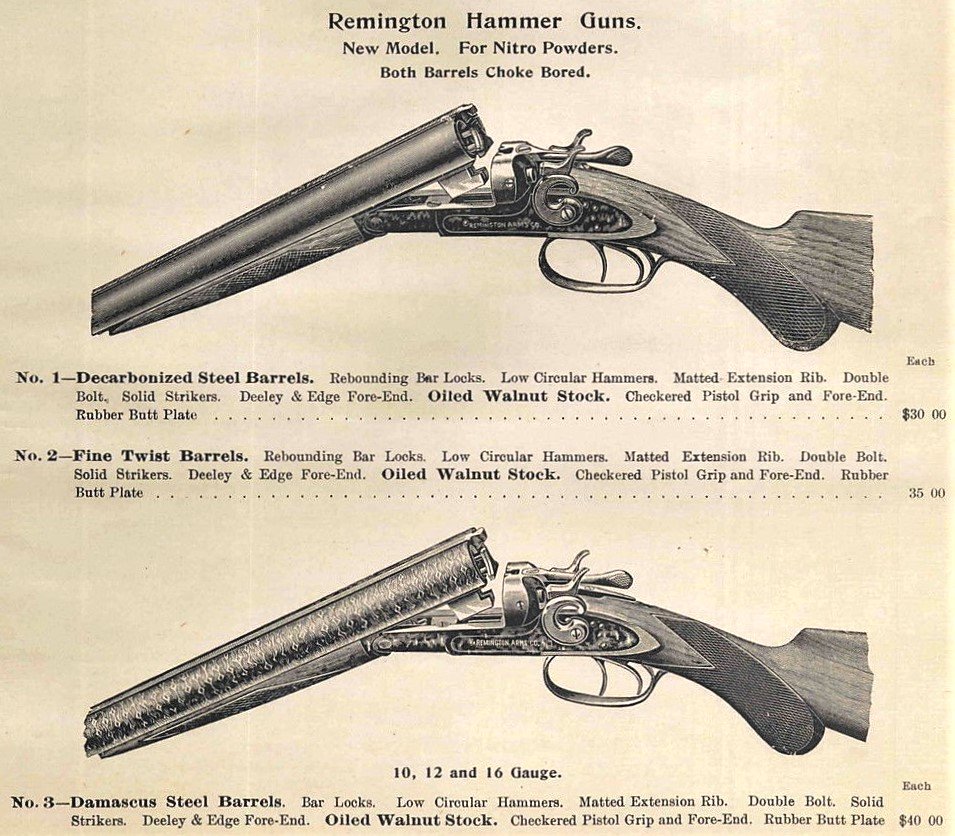
The Remington No. 3 Model of 1893 single was listed with “Blue Steel” and No. 9 Model of 1902 with “Special Steel”.
The No. 9 hang tag (Courtesy of David Noreen) states: “The barrels of this gun have been THOROUGHLY TESTED and are guaranteed for all standard brands of Smokeless and Black powder, when properly – but not excessively, loaded.”
The maximum 12 gauge load was 3 1/4 Dr. Eq. of Bulk or Dense Smokeless powders with 1 1/4 ounces shot; NOT a light load with chamber pressures by modern transducer measurement of Bulk Smokeless of about 10,000 psi.
It is assumed that the Remington Steel used on the A Grade Hammerless Model of 1894 starting in 1897, K Grade (Model 1900) Hammerless, and Model of 1894 Hammerless Grade “F.E.” Trap Gun (introduced in 1906) was similar to Marlin “Special Rolled Steel” and Winchester “Rolled Steel”. The April 1897 Remington catalog stated “Remington blued steel barrels are manufactured in our own works” and the Sears catalog No. 112 c. 1902 states the K Grade has “fine Decarbonized steel barrels”.
The 20g Model 17 introduced in the 1920 Remington Arms – Union Metallic Cartridge Co. catalog was listed with “Remington Steel” barrels. In 1926 the barrels were “Remington Highest Quality Steel”. Later Remington Arms Co., Inc. catalogs did not specify the barrel steel.
Remington F.E. Grade Trap Gun
with “Remington Steel” barrels
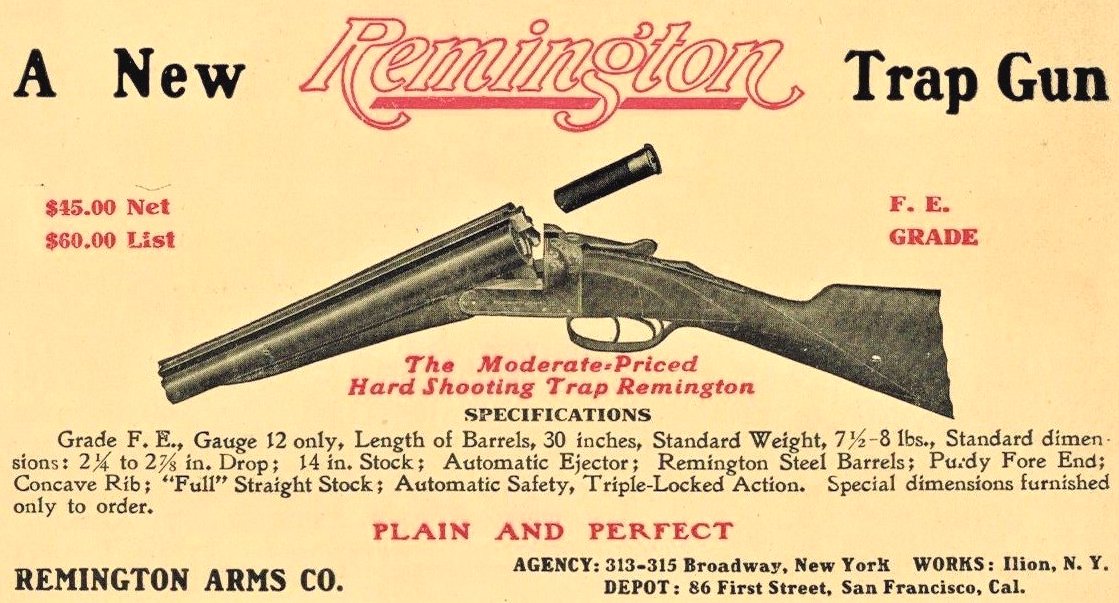
(Courtesy of David Noreen)
Remington introduced Ordnance Steel for the (Model 1894) Hammerless Double in the April 1897 catalog. The 1898 catalog stated the Remington Ordnance Steel tensile strength was 110,000 psi.
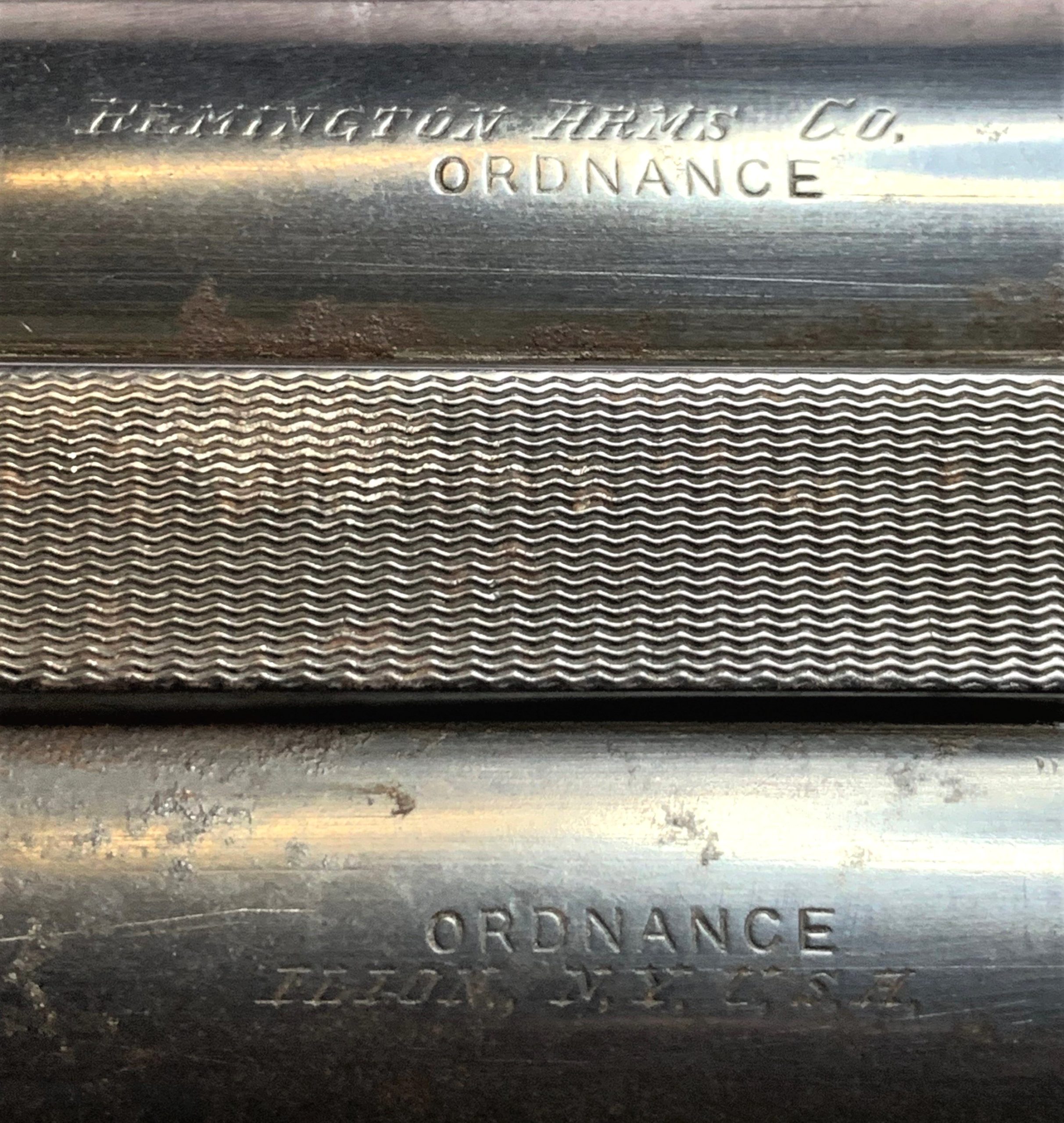
(Courtesy of David Noreen)
Remington Hammerless AE
in 1898 Remington catalog
(Courtesy of David Noreen)
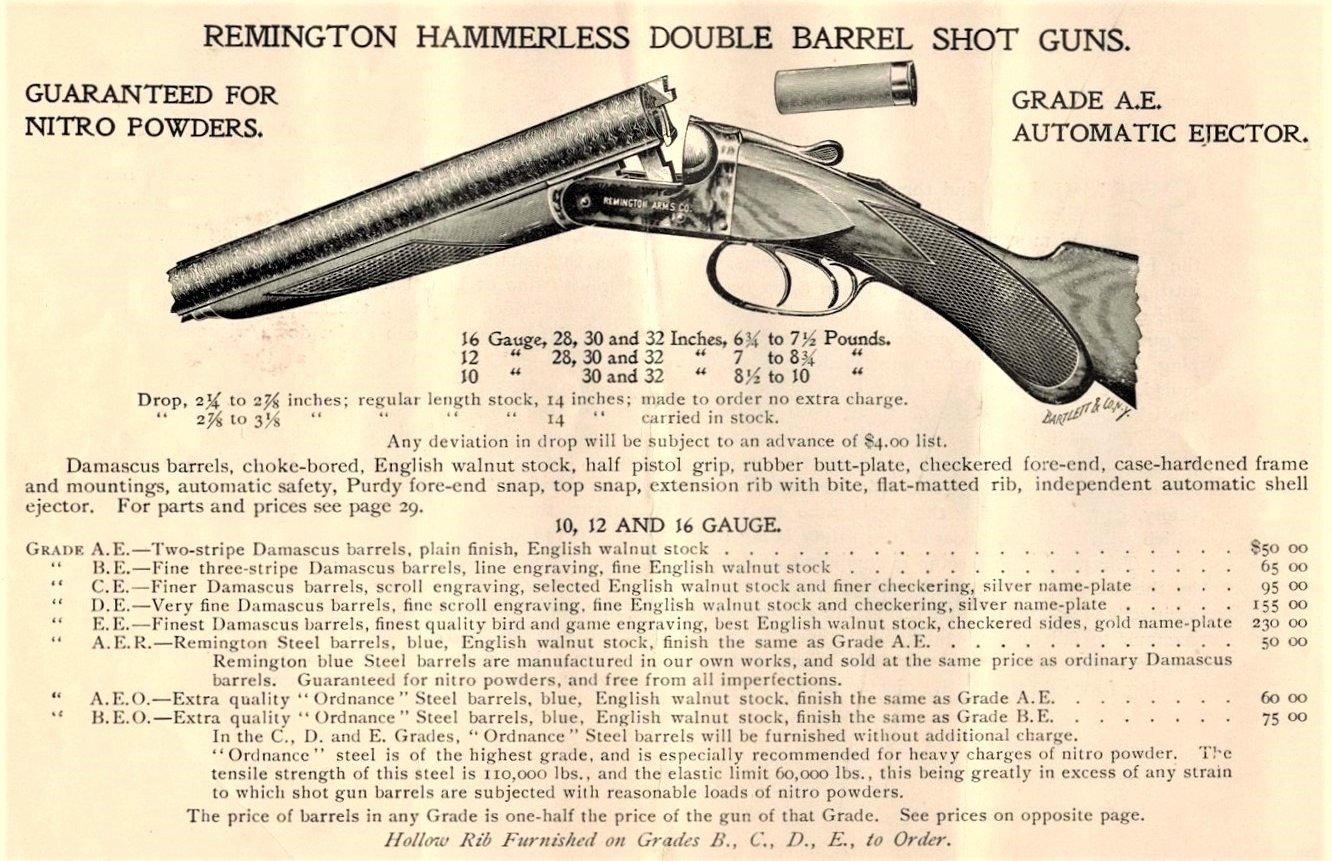
In 1909 Remington offered an Ordnance Steel barrel in place of the regular Remington Steel barrel on the “Pump Action Repeating Shotgun” (later No. 10) and “Autoloading Shotgun” (No. 11) for an extra $6.75.
Pump Shotguns in 1909 Remington catalog
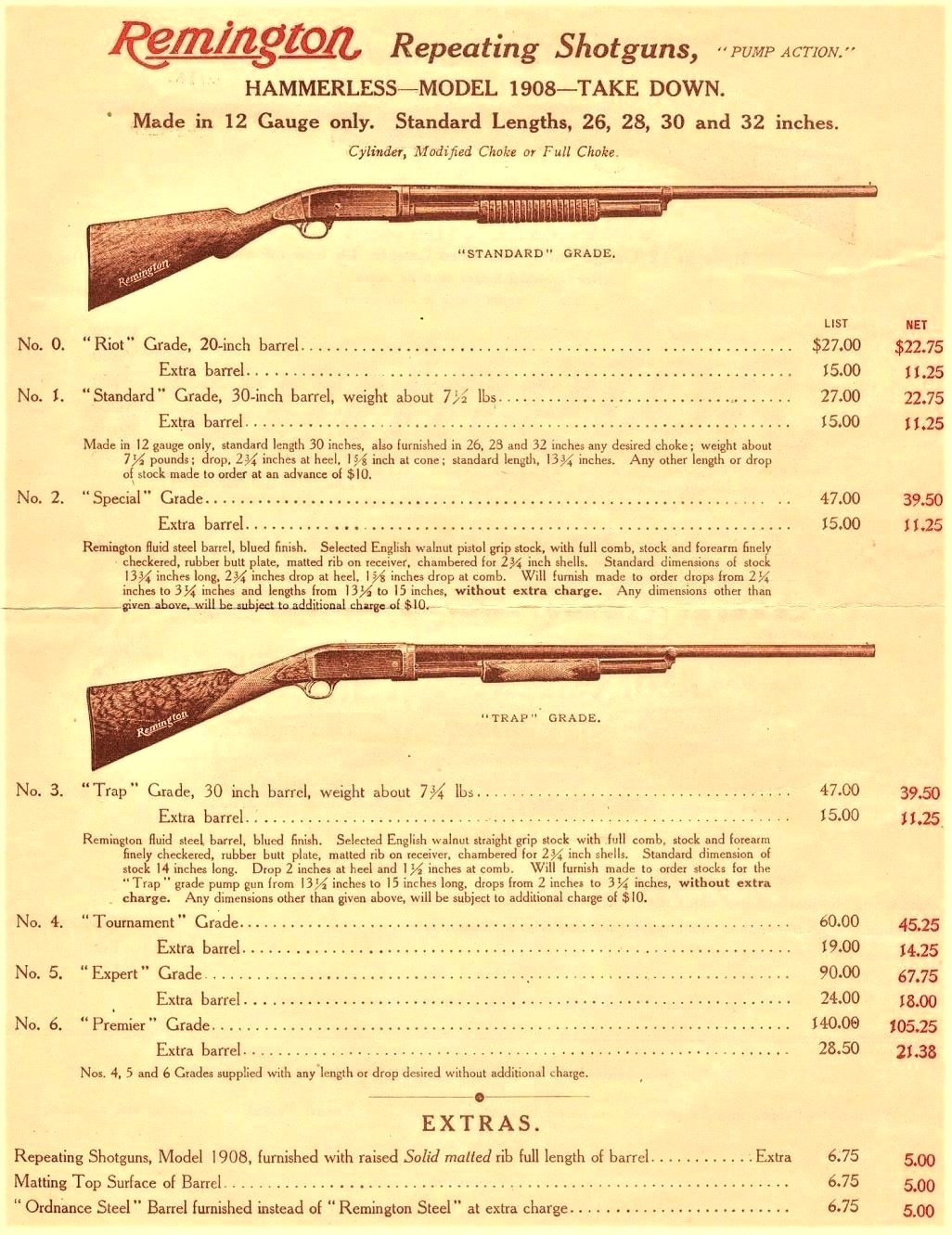
(Courtesy of David Noreen)
The chemical composition of Remington Ordnance Steel is unknown, but based on the tensile strength it would be compatible with AISI 1040, possibly rephosphorized.
The $750 Remington Model of 1894 “Special” was listed in 1902 with “nickel steel barrels”. The 1903-04 catalog listed Nickel, Ordnance or Whitworth barrels.
“Special” in the 1902 Remington catalog
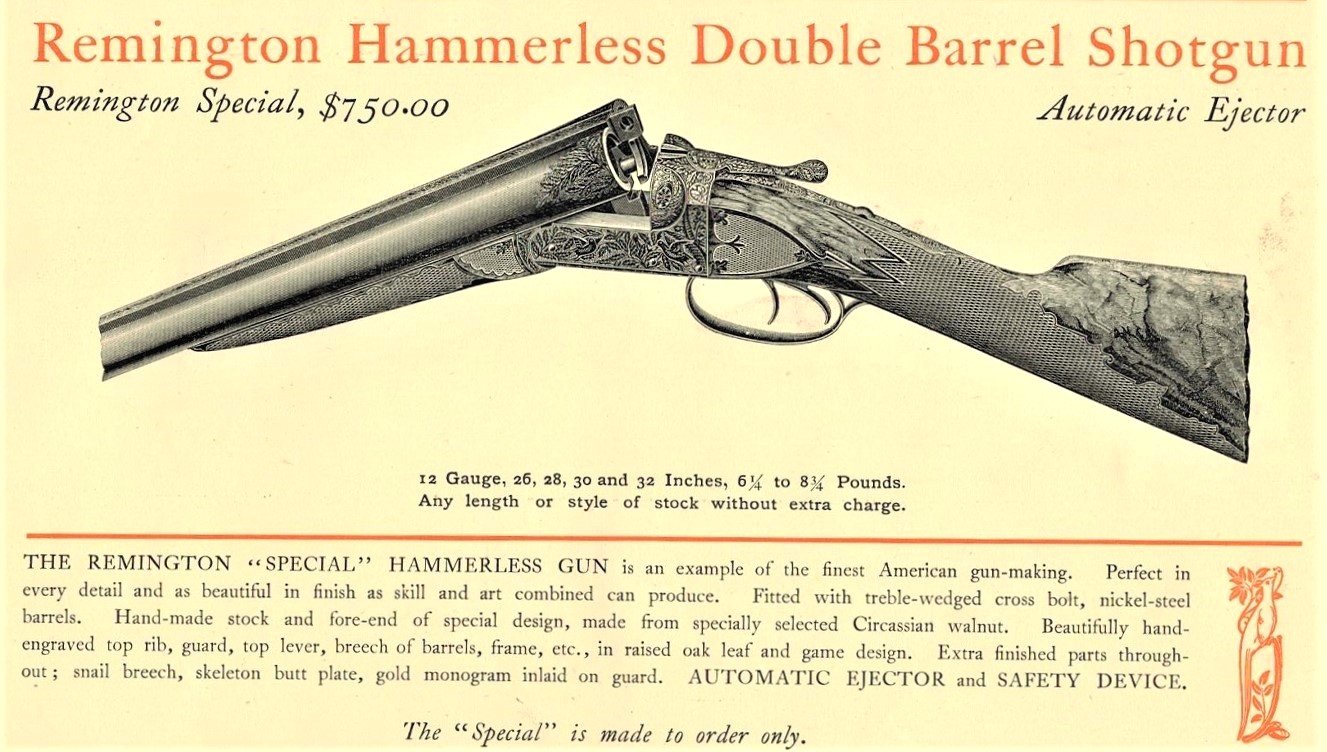
(Courtesy of David Noreen)
Winchester Nickel Steel (AISI 2340 by a recent composition analysis), introduced for the Model 1894 rifle in 1895, and used for the Winchester Repeating Shotgun Model of 1912 was reported to have an ultimate tensile strength of 100,000 – 107,000 psi with an elastic limit of 81,000 psi.
Krupp Fluss Stahl (Homogeneous Fluid Steel) was introduced about 1890 and by composition was similar to AISI 1045. It was offered by several U.S. doublegun makers including Lefever Arms, Ithaca Gun Co., Meriden Fire Arms, and (briefly) by Hunter Arms Co. According to Charles Semmer a few late production D quality 12 gauge guns were barreled with Krupp Fluid Steel tubes.
Summary of Pre-WWI Steel
Shotgun Barrels
Without analysis we can only assume barrel composition from published reports and period advertisements. Unfortunately, no published chemical analysis of Remington Steel nor Ordnance Steel can be found.
The vast majority of utility grade single and double barrels were likely Decarbonized Steel, possibly rephosphorized and “cold rolled” for greater strength. By the 1880s, barrels, and especially frames, were often AISI 1018 or 1020, both of which are easily “Carburized” or color case hardened.
Higher grade guns had higher grade steel; AISI 1030 – 1045 (possibly rephosphorized) and alloy steels, Nickel Steel, Vickers, Delcour-Dupont, Cockerill Acier Universel or Acier Special, Siemens-Martin (AISI 1021 – 1034), Krupp Fluss Stahl, Wittener Excelsior Stahl, or Whitworth on the highest grades.
“Cold Rolled” Barrel Steel Tensile Strength for comparison. All can be heat treated for different applications (rifle receivers) to much higher strength.
- Twist and Crolle Damascus: about 55,000 psi;
- Winchester Standard Ordnance and other “cold rolled” Bessemer/Decarbonized Steels, and AISI 1020: 60,000 psi;
- c. 1900 “Fluid Steel” (Siemens-Martin & Krupp Open Hearth Steel): 75,000 – 85,000 psi;
- AISI 1140 resulfurized carbon steel: 85,000;
- Krupp Fluss Stahl (Homogeneous Fluid Steel) was introduced about 1890 and by reported composition was similar to AISI 1045: 85,000 psi;
- AISI 1040 (and modified), Bohler “Blitz”, 4140 Chrome Moly (not used for gun barrels until after 1930): 95,000 – 100,000 psi;
- Winchester Nickel Steel and Marlin “Special Smokeless Steel”: 100,000 – 107,000 psi.
Conclusion
Remington clearly choose “quality” steel for shotgun barrels for the era in which they were made. The Remington Arms Co. catalogue in October 1894, which introduced the Remington Hammerless Double Barrel Shotgun, stated “The Remington Guns, both Hammer and Hammerless, are especially adapted to all nitro powders, and every gun is thoroughly proved, tested and targeted, before leaving the armory.” (Courtesy of David Noreen)
The hang tags accompanying each gun indicated the loads for which the gun (and barrel steel) was designed. A 1908 hang tag for a 12g Remington 1900 KE (Remington Steel) Hammerless states that the gun was targeted with 24 grains (3 1/4 Dr. Eq.) of “Infallible” in a 2 5/8” U.M.C. “Nitro Club” shell with 1 1/4 ounce of #8 chilled shot. The maximum recommended 12g loads were 3 1/4 Dram of Bulk Smokeless or 26 grains (3 1/2 Dr. Eq.) of “Infallible” or “Ballistite” Dense smokeless powders. Breech pressures of those loads were essentially the same as modern shotshells, approaching the SAAMI 12g 2 3/4” recommended service load maximum of 11,500 psi.
NO barrel after possibly 120 years of use (and abuse?) can be assumed to be safe until evaluated by a specialist smith with the interest, expertise, and equipment (a bore scope and wall thickness gauge) to do so. But thereafter, the user of an unmolested vintage Remington steel barreled shotgun may have confidence that the barrels are not at risk of catastrophic failure, when used with loads for which it was designed.
